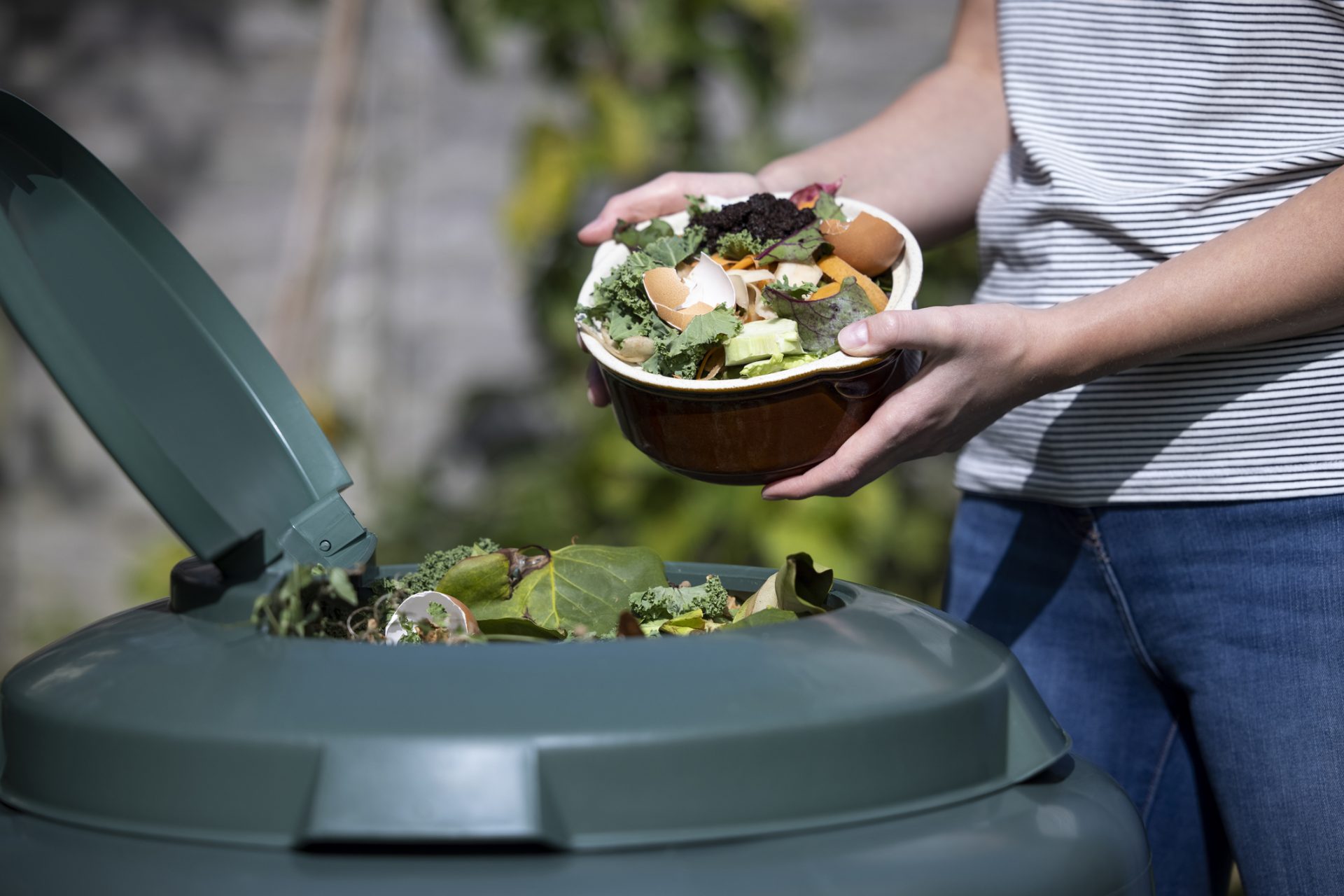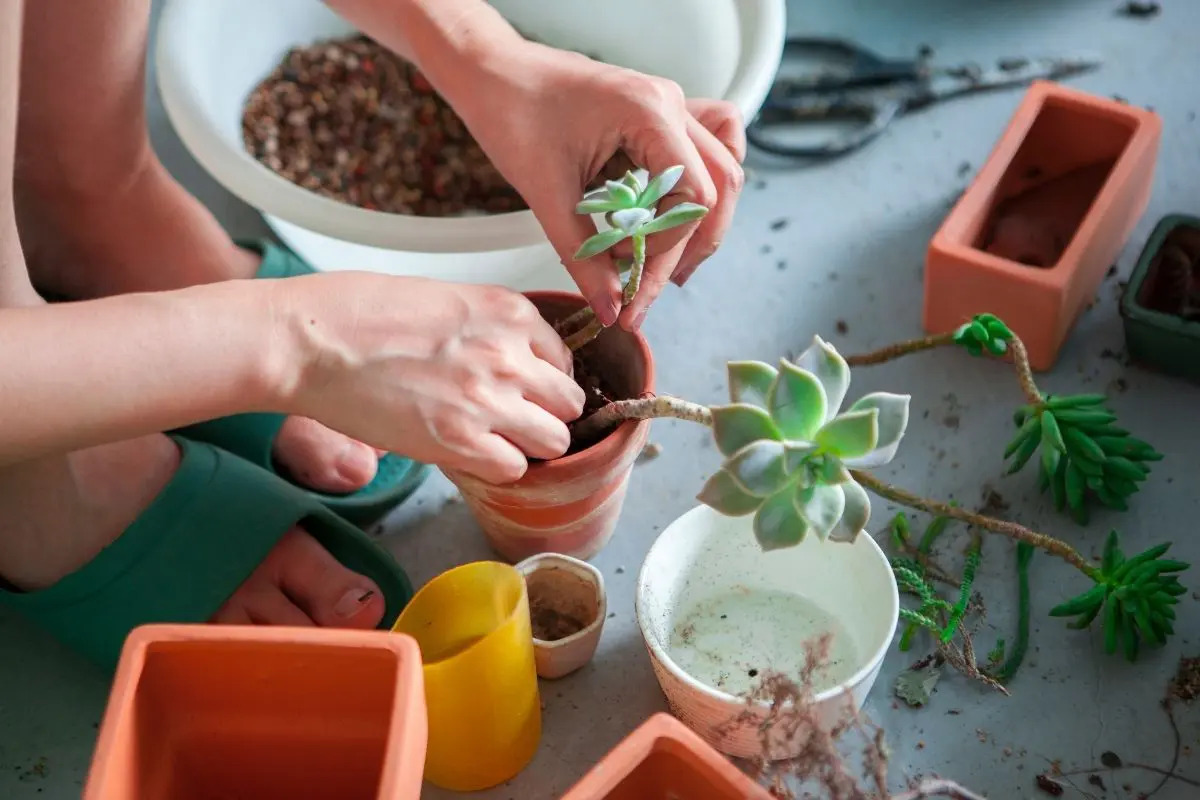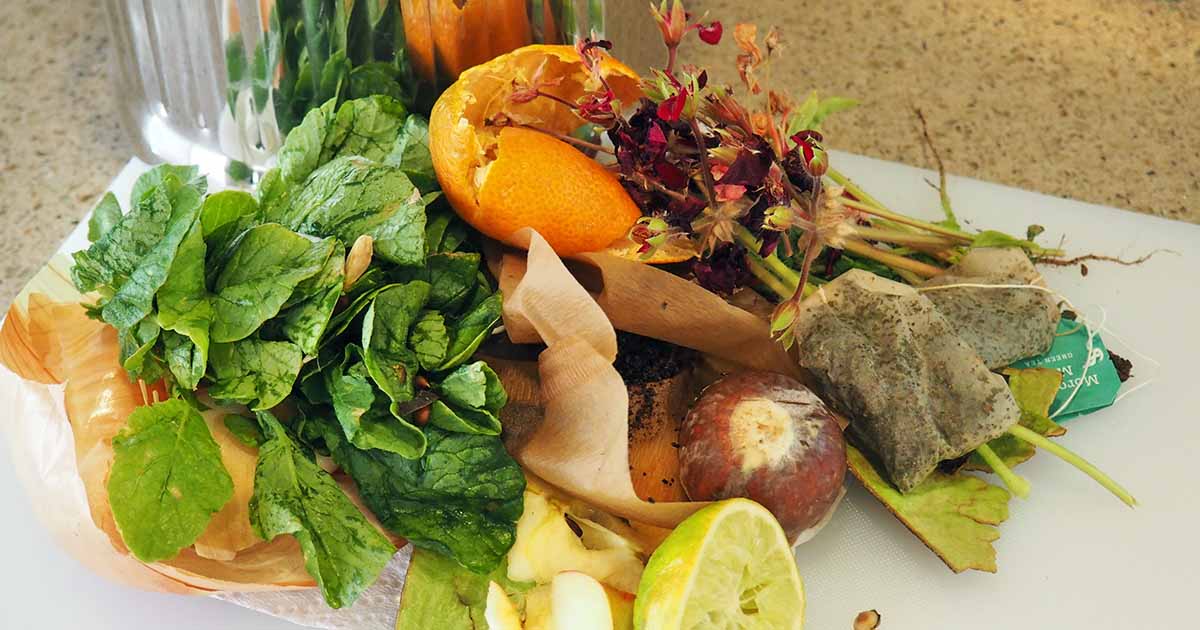Home>Gardening Basics>Getting Started>How Do I Get A Cultivation License


Getting Started
How Do I Get A Cultivation License
Published: January 25, 2024
Learn the step-by-step process of getting started with obtaining a cultivation license for your business in the cannabis industry. Boost your chances of success with expert guidance.
(Many of the links in this article redirect to a specific reviewed product. Your purchase of these products through affiliate links helps to generate commission for Chicagolandgardening.com, at no extra cost. Learn more)
Table of Contents
- Introduction
- Understanding Cultivation Licenses
- Researching Cultivation License Requirements
- Meeting Eligibility Criteria for a Cultivation License
- Preparing the Application for a Cultivation License
- Submitting the Cultivation License Application
- Waiting for Approval of the Cultivation License Application
- Post-Approval Steps for Obtaining a Cultivation License
- Maintaining Compliance with Cultivation License Regulations
- Conclusion
Introduction
Welcome to the world of cultivation licenses! If you’ve ever dreamed of growing your own crops or starting a cannabis business, obtaining a cultivation license is the first step towards turning your vision into reality. A cultivation license grants you the legal permission to cultivate and harvest specific types of plants or crops.
Whether you want to grow cannabis, fruits, vegetables, or even flowers, understanding the process of obtaining a cultivation license is crucial. This article will guide you through the key steps you need to take to get your own cultivation license.
It’s important to note that the specific requirements for a cultivation license can vary widely depending on your location and the type of crop you intend to grow. Regulations and licensing procedures differ from country to country, state to state, and even city to city. Therefore, it’s essential to thoroughly research and understand the specific rules and regulations that apply in your area.
Getting started can feel overwhelming, but with the right knowledge and preparation, you can navigate the process successfully. This article will cover everything from researching the license requirements to maintaining compliance once you’ve obtained your cultivation license.
So, whether you’re a budding entrepreneur or a passionate grower looking to expand your operation, let’s dive in and explore the fascinating world of cultivation licenses. Get ready to unlock the potential to cultivate and grow with confidence!
Understanding Cultivation Licenses
Before delving into the process of obtaining a cultivation license, it’s crucial to have a clear understanding of what a cultivation license entails. A cultivation license is a legal document that authorizes an individual, business, or organization to grow and harvest specific types of plants or crops.
These licenses are typically required for various purposes, including commercial agriculture, horticulture, cannabis cultivation, and research. The specific regulations and requirements for cultivation licenses can vary widely based on the jurisdiction and the type of crop being grown.
In the case of cannabis cultivation, for instance, the license may specify the number of plants permitted, cultivation methods, security measures, and compliance with the applicable laws and regulations. On the other hand, for agricultural crops, the license may cover factors such as irrigation, pesticide use, and land usage.
As with any regulatory process, it is essential to understand the legal framework surrounding cultivation licenses. Familiarize yourself with the governing authorities, such as local agricultural departments, state regulatory agencies, or specialized cannabis control boards, depending on the crop you plan to cultivate.
It’s important to note that obtaining a cultivation license goes beyond just legal compliance. It provides you with an opportunity to demonstrate your commitment to responsible and sustainable cultivation practices. Cultivation licenses help ensure the quality, safety, and traceability of the crops grown, which is especially critical for highly regulated industries like cannabis.
Moreover, understanding the different types of cultivation licenses available is crucial. Depending on the jurisdiction, you may encounter licenses for outdoor cultivation, indoor cultivation, greenhouse cultivation, or a combination of these methods. Each type of license comes with its own set of requirements and guidelines for operation.
By gaining a comprehensive understanding of cultivation licenses, you’ll be better equipped to navigate the licensing process effectively and make informed decisions for your operation. Now that we’ve covered the basics, let’s move on to the next step: researching the specific requirements for obtaining a cultivation license.
Researching Cultivation License Requirements
Once you have a solid understanding of cultivation licenses, it’s time to dive into the research phase. Before you can apply for a cultivation license, you need to familiarize yourself with the specific requirements and regulations that govern the licensing process in your jurisdiction.
Start by identifying the governing authorities responsible for issuing cultivation licenses. This may include agricultural departments, specialized cannabis control boards, or regulatory agencies specific to your industry. Visit their websites or contact them directly to access the necessary information. Many jurisdictions provide detailed guidelines and resources online to assist applicants.
Take the time to thoroughly read and understand the regulations pertaining to cultivation licenses. Pay close attention to eligibility criteria, operational guidelines, documentation requirements, and any restrictions or limitations that may apply.
Researching the requirements will also help you gain insights into any additional steps you may need to take before applying for a cultivation license. For example, you may need to obtain zoning permits, fulfill environmental impact assessments, or meet specific security and safety standards.
It’s also important to research any additional licenses or permits that may be required in conjunction with a cultivation license. For instance, in the cannabis industry, you may need separate licenses for distribution, manufacturing, or retail operations. Understand the complete regulatory landscape to ensure compliance and avoid any surprises down the road.
Seeking guidance from industry associations, consultants, or legal professionals can be invaluable during the research phase. They have the expertise and experience to help you navigate the complexities of the licensing process and ensure that you are well-prepared when it’s time to submit your application.
Remember, the research phase is crucial to obtain accurate and up-to-date information. Regulations and requirements can change over time, so stay informed and regularly check for any updates or amendments to the licensing process.
By conducting thorough research, you will gain a comprehensive understanding of the cultivation license requirements in your jurisdiction. Armed with this knowledge, you’ll be ready to move on to the next step: ensuring you meet the eligibility criteria for a cultivation license.
Meeting Eligibility Criteria for a Cultivation License
Now that you have thoroughly researched the cultivation license requirements, it’s time to assess your eligibility for obtaining a license. Each jurisdiction has specific criteria that applicants must meet before they can be considered for a cultivation license.
Firstly, review the eligibility requirements outlined by the governing authority responsible for issuing cultivation licenses in your jurisdiction. This may include factors such as minimum age, residency requirements, and any background checks or financial criteria that need to be satisfied.
In some cases, you may need to demonstrate prior experience or education in cultivation practices, especially for highly regulated crops like cannabis. Certain jurisdictions may require you to undergo training or certification programs to ensure you possess the necessary knowledge and skills.
Additionally, it’s important to assess the suitability of your proposed cultivation site. You may need to provide details about the location, size, and condition of the land or facilities where you intend to cultivate. Ensure that your site meets any zoning requirements or environmental considerations outlined in the regulations.
Financial stability is another crucial aspect of meeting eligibility criteria. Some jurisdictions may require applicants to demonstrate sufficient capital or funding to cover the costs of setting up and operating a cultivation operation. This may include expenses such as equipment, infrastructure, utilities, and ongoing operational costs.
Lastly, it’s vital to have a strong understanding of the specific crop you intend to cultivate. Familiarize yourself with best practices, cultivation techniques, and any specialized knowledge required for successful and compliant cultivation. This knowledge will not only help you meet eligibility criteria but also position you for long-term success in your chosen industry.
If you find that you do not currently meet all the eligibility criteria, don’t be discouraged. Use this as an opportunity to identify any gaps and develop a plan to address them. This may involve gaining relevant experience, completing required training or certifications, or securing the necessary financing. Take the time to build a solid foundation that meets all the prerequisites for a cultivation license.
By assessing and meeting the eligibility criteria, you will position yourself as a strong candidate for obtaining a cultivation license. With your eligibility determined, it’s time to prepare the application for your desired cultivation license.
Preparing the Application for a Cultivation License
Now that you’ve determined your eligibility for a cultivation license, it’s time to start preparing the application. The application process can vary widely depending on your jurisdiction and the type of crop you plan to cultivate. However, there are several key steps and considerations to keep in mind.
Begin by gathering all the necessary documentation and information required for the application. This may include personal identification, proof of residency, financial statements, business plans, site plans, security measures, and any other supporting documents as outlined in the regulations.
Ensure that all the documents are in order and meet the specified requirements. Double-check that they are complete, accurate, and up-to-date. Missing or incomplete information can significantly delay the processing of your application or even result in its rejection.
Next, carefully review the application form provided by the governing authority. Follow the instructions closely and provide all the requested information. Pay attention to any specific formatting or submission guidelines, such as electronic submission or specific file formats.
When completing the application, it’s essential to be clear, concise, and transparent. Provide detailed answers to all the questions, addressing each requirement or criterion specified in the application form. Be prepared to explain your cultivation plans, operational procedures, security measures, and compliance protocols.
Consider including any relevant supporting documentation that can bolster your application. This may include business licenses, professional certifications, industry affiliations, or letters of recommendation. These additional documents can help demonstrate your credibility, experience, and commitment to regulatory compliance.
If you’re uncertain about any aspect of the application, seek guidance from industry experts, consultants, or legal professionals. They can provide valuable insight and ensure that your application is comprehensive and well-prepared.
Take the time to review and proofread your application before submission. Ensure that there are no grammatical errors, inconsistencies, or missing information. It’s a good practice to have someone else, such as a trusted colleague or friend, review your application for a fresh perspective.
Finally, keep in mind any deadlines or specific timelines associated with the application process. Submit your application well in advance to account for processing times and any unexpected delays that may arise.
By thoroughly preparing the application, you increase your chances of a successful outcome. Now, it’s time to move on to the next step: submitting your cultivation license application and waiting for its approval.
Submitting the Cultivation License Application
Congratulations on preparing your cultivation license application! It’s now time to submit your application to the appropriate governing authority. The submission process is a crucial step towards obtaining your desired cultivation license.
Before submitting your application, double-check that you have included all the required documents and information. Ensure that everything is organized, complete, and in compliance with the specific guidelines provided by the governing authority.
Review the submission process outlined by the authority in charge. This may involve submitting physical copies of your application and supporting documents, or it might require an online submission through a designated portal. Take note of any designated submission deadlines or specific requirements.
If you are submitting a physical application, make sure to follow any formatting or packaging instructions. Use secure envelopes or folders to protect your documents and ensure their safe delivery. It may be helpful to keep copies of your application and supporting documents for your records.
If an online submission is required, familiarize yourself with the online portal and any technical specifications. Ensure that all documents are in the specified file formats and sizes. Take the time to thoroughly review your application before uploading to the online portal.
Once you have submitted your application, you may receive an acknowledgment of receipt from the governing authority. Keep this confirmation for your records as proof of submission. If there are any updates or additional information required during the evaluation process, be prompt in providing the requested information.
After submission, it’s important to be patient. The processing time for cultivation license applications varies depending on the jurisdiction and the complexity of the application. It may take several weeks or even months to receive a response.
During the waiting period, avoid the temptation to contact the governing authority too frequently for updates. However, if there are significant delays or if you have concerns about the status of your application, it is appropriate to reach out for a status update.
While waiting for approval, continue to prepare for the next steps in the process. Familiarize yourself with any post-approval requirements, such as inspections, interviews, or additional documentation that may be requested upon successful evaluation of your application.
By carefully submitting your cultivation license application and patiently awaiting a response, you are taking the necessary steps towards achieving your goal. Now, it’s time to move forward and explore the post-approval steps for obtaining your cultivation license.
Waiting for Approval of the Cultivation License Application
After submitting your cultivation license application, the next step is to patiently wait for approval. This waiting period can be both exciting and nerve-wracking, but it’s an essential part of the process.
Keep in mind that the length of the waiting period can vary depending on factors such as jurisdiction, the complexity of your application, and the current workload of the governing authority. It’s important to be patient and avoid continuously contacting the authority for updates, as this may disrupt their evaluation process.
During this waiting period, you can utilize your time wisely by preparing for the next steps in the process. Start by familiarizing yourself with the post-approval requirements that may be necessary to obtain your cultivation license.
Review the regulations and guidelines provided by the governing authority to understand any inspections or interviews that may be required. Ensure that you are well-prepared to meet these additional requirements once your application has been approved.
In some cases, you may need to undergo site inspections to verify that your cultivation operation complies with the regulations. This may include assessments of your facilities, security measures, and adherence to best practices. Be prepared to address any identified issues or concerns during these inspections.
During the waiting period, it’s also essential to stay informed about any updates or changes in the regulations or licensing process. Keep an eye on the governing authority’s website, subscribe to newsletters, or join industry forums or associations to stay up-to-date with the latest developments. This knowledge will be valuable in ensuring ongoing compliance with the requirements once your license is approved.
While waiting for approval, use this time to network and build relationships within the industry. Attend industry events, join online communities, and connect with other cultivators, professionals, and experts. These connections can provide valuable insights, advice, and ongoing support as you move forward with your cultivation operation.
Remember, the waiting period is an opportunity to reflect and fine-tune your plans for cultivation. Use this time to evaluate and optimize your cultivation techniques, develop efficient processes, and explore potential partnerships or collaborations that can enhance your cultivation endeavors.
Lastly, try to remain positive and optimistic throughout the waiting period. Keep in mind that the evaluation process takes time, and approval is not guaranteed. However, with thorough preparation and adherence to the regulations, you’ve increased your chances of successful approval.
By using this waiting period wisely and proactively, you are positioning yourself for success in the cultivation industry. Once your application is approved, you can move forward to the post-approval steps and finally obtain your coveted cultivation license.
Post-Approval Steps for Obtaining a Cultivation License
Congratulations! Your cultivation license application has been approved, and you are one step closer to realizing your cultivation dreams. Now that you have received approval, there are several important post-approval steps to complete before obtaining your cultivation license.
The first step is to carefully review the conditions and requirements outlined in the approval notice. Take note of any specific instructions or deadlines provided by the governing authority. Ensure that you fully understand the expectations and obligations associated with your license.
One essential post-approval step is to schedule any necessary inspections or interviews as mandated by the governing authority. These inspections are conducted to verify that your cultivation operation is compliant with the regulations and guidelines. Be well-prepared, ensure that your facilities, security measures, and cultivation practices adhere to the approved plan.
During the inspection, be open to feedback and address any issues or concerns raised by the inspectors promptly. Make any necessary adjustments to your operation to ensure compliance with the regulations before the final inspection.
In addition to inspections, you may be required to complete any outstanding paperwork or documentation. This may include signing agreements, obtaining additional permits, or providing specified financial or insurance information. Ensure that all paperwork is completed accurately and submitted within the required timelines.
Part of the post-approval process may involve paying any applicable licensing fees. Familiarize yourself with the fee structure and payment guidelines provided by the governing authority. Make sure you understand the payment methods accepted and the due dates for fees to maintain compliance and avoid any penalties or delays.
Don’t overlook the importance of ongoing compliance with the regulations once you obtain your cultivation license. Familiarize yourself with the conditions and requirements to maintain your license. This may include regular reporting, inspections, compliance audits, or renewals. Stay organized and ensure you meet all ongoing obligations to keep your license valid and in good standing.
As you navigate the post-approval steps, continue to invest in your cultivation operation’s success. Stay updated on industry trends, research new cultivation techniques, and engage in continuous learning. Network with other cultivators and professionals in the industry to exchange knowledge, experiences, and best practices.
Remember that obtaining a cultivation license is just the beginning. It opens the door to a world of opportunities and challenges in the cultivation industry. Embrace the journey and remain dedicated to achieving excellence in your cultivation practices.
By completing the necessary post-approval steps, you are now ready to obtain your official cultivation license. Embrace the responsibilities and possibilities that come with it, and enjoy the journey of cultivating your crops with pride and compliance.
Maintaining Compliance with Cultivation License Regulations
Once you have obtained your cultivation license, it is essential to maintain strict compliance with the regulations set forth by the governing authority. Compliance ensures that you operate your cultivation business legally and ethically while upholding the integrity of the industry. Here are some key steps to help you maintain compliance with your cultivation license regulations.
First and foremost, familiarize yourself with the specific regulations and guidelines outlined in your cultivation license. Understand the requirements related to cultivation practices, security measures, record-keeping, testing, disposal, and any other stipulations relevant to your operations.
Establish robust operational procedures that align with the regulations. Develop standard operating procedures (SOPs) that document your cultivation practices, including procedures for planting, watering, fertilizing, pest control, and harvesting. These procedures should prioritize compliance with the regulatory standards.
Implement a comprehensive inventory tracking system to keep a meticulous record of your plants, including their growth stages, quantities, and disposals. Regularly update this system to accurately reflect any changes in your cultivation operation.
Implement stringent security measures to protect your cultivation facility, products, and personnel. This may include video surveillance systems, access control, alarm systems, and inventory tracking to prevent unauthorized access, theft, or diversion of your crops.
Regularly review and update your SOPs and operational procedures to ensure they remain in compliance with any changes or updates in the regulations. Stay informed about any amendments or additions to the cultivation license regulations and adapt your practices accordingly.
Maintain thorough and up-to-date records of all activities, including cultivation practices, pest management, nutrient applications, and disposal of any waste products. Adhere to any reporting requirements specified by the governing authority, making sure to submit accurate and timely reports.
Implement a robust quality control program that includes regular testing of your crops for purity, potency, and contaminants. Follow the established regulations for testing, and keep detailed records of all test results, ensuring they comply with the designated thresholds.
Regularly train and educate your staff on the cultivation license regulations and SOPs to ensure that everyone understands and follows the compliance procedures. Provide ongoing training on safety protocols, pesticide application, and any other specific requirements outlined in the regulations.
Proactively engage with the governing authority and maintain positive communication. Stay updated on any new guidelines, attend informational sessions or workshops, and seek guidance when needed. Building a relationship with the authority ensures a collaborative approach to compliance.
Regularly conduct internal audits to ensure ongoing adherence to the cultivation license regulations. Identify any potential areas of non-compliance and take prompt corrective action to rectify them. Embrace a culture of compliance and continuous improvement within your cultivation operation.
Remember, maintaining compliance is an ongoing commitment that requires vigilance. It not only ensures your continued legal operation but also safeguards the reputation of your business and the integrity of the industry as a whole.
By following these steps and prioritizing compliance with the cultivation license regulations, you will pave the way for long-term success in the cultivation industry.
Conclusion
Congratulations on exploring the world of cultivation licenses! Obtaining a cultivation license is the first step towards turning your passion for growing crops into a legal and thriving business. Throughout this article, we have covered the essential steps you need to take on your journey towards obtaining a cultivation license.
We began by understanding what cultivation licenses are and their significance in various industries, including agriculture and cannabis cultivation. We then delved into the importance of researching the specific requirements for obtaining a cultivation license in your jurisdiction. By meeting the eligibility criteria and preparing a comprehensive application, you can increase your chances of approval.
In the waiting period for approval, it’s crucial to be patient and use the time wisely by preparing for the post-approval steps. Once approved, you must complete inspections, fulfill any outstanding requirements, and pay necessary fees. Maintaining compliance with the regulations is paramount to ensure the ongoing success of your cultivation operation.
Remember, the journey to obtaining and maintaining a cultivation license requires dedication, attention to detail, and a commitment to meeting regulatory standards. By staying informed, following the guidelines, and continuously improving your practices, you will pave the way for a successful and compliant cultivation operation.
We hope that this article has provided you with valuable insights and guidance on obtaining a cultivation license. Remember to always consult the specific regulations and guidelines provided by the governing authority in your jurisdiction for the most accurate and up-to-date information.
Now, it’s time to take the leap and embark on your cultivation license journey. Embrace the opportunities and challenges that come with it, and enjoy the fulfillment of cultivating and growing your crops with confidence and compliance.








